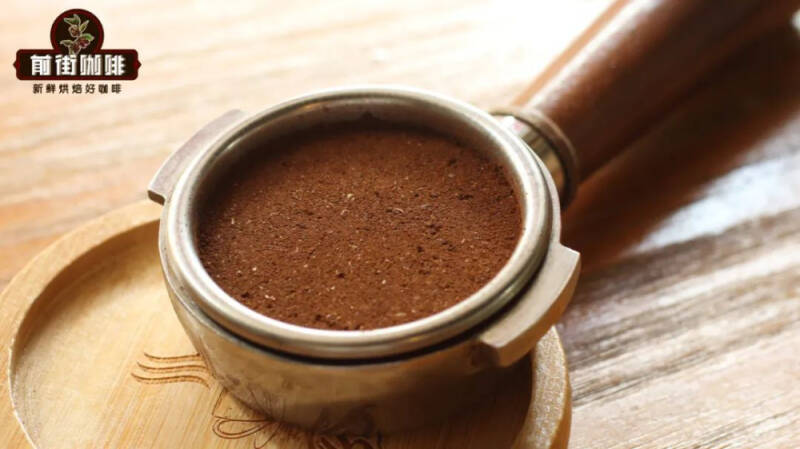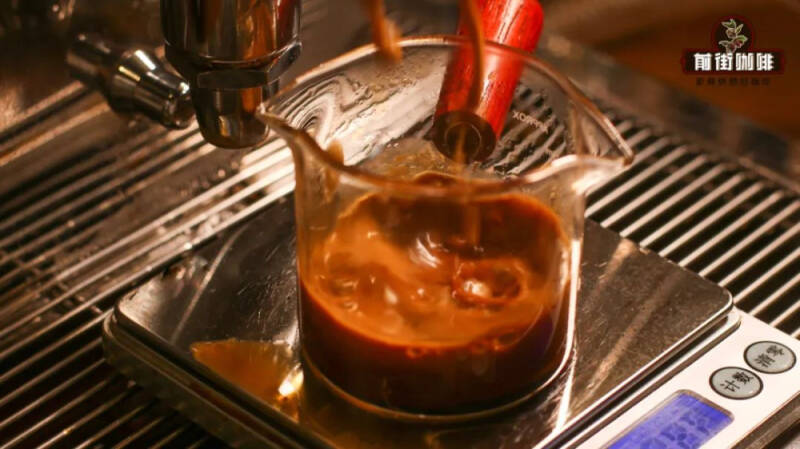What is the reason why the concentrated oil is thin? Why does Crema have so many big bubbles? What makes espresso coffee bad?
Recently, when surfing in Qianjie, I found that many friends would have this situation when extracting and concentrating: "the extracted espresso oil is thin and comes with a lot of obvious big bubbles!" the whole cup of coffee tastes light and tastes thin, and the beauty of the flower pattern is affected by the existence of bubbles! " As a result, these friends posted online for help. So, what is the reason for this to happen?
The main influencing factors: incorrect grinding will have many factors that can lead to this situation, but no matter what kind of factors, will involve "grinding", and grinding is too rough, is the main reason for this situation.

When the coffee powder is ground too rough, the gap between the powder and the powder will be increased, and the hot water will have more room to flow. During extraction, this situation will increase the flow rate of hot water, and the increased flow rate of hot water can quickly penetrate the powder bed, so we can extract the target liquid weight faster. However, with the increase of flow rate, the contact time between powder and water is shortened. This will not only prevent the hot water from fully extracting the flavor substances from the coffee, but also cause the dripping coffee liquid to have a strong impact because of the rapid flow rate. The impacting coffee liquid then rushes the air into the concentrate, forming huge bubbles visible to the naked eye.

Although the bubbles will disappear quickly in a short period of time, the taste of coffee will not be improved. Therefore, when this situation occurs, we need to adjust the "initiator" and "degree of grinding" of the problem. As mentioned earlier, this is due to rough grinding! So we need to fine-tune the grinding, and the specific adjustment can be as shared in the front street in the past, first apply a formula, we adjust the grinding according to the formula.
For example, the formula is 20g powder, the powder-to-liquid ratio at 1:2 (extraction of 40ml concentrate), and the extraction time is 30 seconds. If we use 20g powder to extract 40ml coffee liquid in 20 seconds, then we need to move the bean grinder several times in a fine direction. The bean grinder used in the front street is Galileo Q18, and each adjustment will increase / decrease the extraction time by about 3 seconds, so when we extract the 40ml concentrate in 20 seconds, we need to move 3 squares to the fine place. When the time is very close to the goal, we will make a slight adjustment through the taste, then a rich and delicious espresso will be finished! Generally speaking, in addition to the replacement of new grinding opportunities, there are two other factors that can greatly change the degree of grinding.
First, beans are not properly placed when we end today's coffee drinking time and no longer extract espresso, coffee beans will be sealed and stored to reduce the loss of flavor substances. But if we don't seal the beans properly, leaving a gap for the beans to breathe, the beans will be exposed to fresh air and lose a lot of carbon dioxide and aromatic substances.
In just a few hours, carbon dioxide and flavor substances can be eliminated. When we extract again the next day, the coffee will be due to the loss of carbon dioxide and flavor substances, resulting in the original grinding degree can not be applied. The extracted espresso is not only thin in fat, but also light in flavor. Even if the appropriate grinding is readjusted, it is difficult for the flavor and oil to return to their heyday state. Therefore, we must pay attention to improve the storage without extraction for a long time in order to prolong the taste period of coffee beans.
Second, the beans with different roasting degrees have been replaced. As we all know, the characteristic of deep-roasted coffee beans is that they are "easy to extract". After baking for a long time, beans have low density and high brittleness, and can be easily extracted by hot water. This property allows sufficient extraction time for water and powder without the need for too fine grinding (compared to extracting light-roasted espresso). After all, with its "sensitive muscle" (deep baked beans), it releases a large amount of carbon dioxide from the body as soon as it is touched by hot water. Carbon dioxide is not only the main material that makes up Crema, but also can fill gaps and slow down the flow of hot water. Therefore, in the process of extraction, the existence of a large amount of carbon dioxide can make water have more extraction space.
When we suddenly replace the deep-baked beans in the warehouse with shallower baked beans, because they do not have the "advantage" of deep-baked beans, they are not easy to be extracted (because of their high density and low brittleness), and they are not so rich in carbon dioxide. Can not slow down the flow of hot water, so it is necessary to increase the surface area of contact with hot water through fine grinding, so that it can be better extracted flavor substances. However, if you do not adjust the grinding after replacing the beans, the coffee powder will be too coarse, resulting in a state of sputtering in the extraction process, resulting in a thin taste of coffee and a lack of oil.
-END-
Important Notice :
前街咖啡 FrontStreet Coffee has moved to new addredd:
FrontStreet Coffee Address: 315,Donghua East Road,GuangZhou
Tel:020 38364473
- Prev

A complete collection of Qianjie Coffee knowledge! A total collection of coffee science popularization, teaching, forums, and knowledge sharing!
Over the years, the Qianjie public account has maintained the rhythm of publishing daily updates, and has written a large number of popular science articles on sharing coffee knowledge. The content is everything from seeds to cups, and the topics covered are also big and small. Some questions that you think of and don't think of have been explained and answered by Qianjie. This place specializes in needles
- Next

I'm desperate! Starbucks employees are going to live broadcast shouting and selling rice dumplings!
▲ Click to pay attention| Daily Boutique Coffee Culture Magazine Coffee Workshop looked at the upcoming Dragon Boat Festival. The workers who had reached the KPI of Xingbing Rice Dumplings couldn't help but breathe a sigh of relief. The burden on them was much lighter, and their friends who had not yet reached the target were anxious. In order to sell off the Xingbing Rice Dumplings they had, they began to think of taking the lead.
Related
- Customers have "changed" Manner's new products! Shop assistant: Please don't mess around!
- Remove sockets in customer areas at Starbucks stores?! Netizen: I won't go if I really tear it down
- What is the difference between the taste steps of sun-dried coffee and washed coffee? Why is sun-cured coffee sweeter and washed coffee sour?
- The recipe for salty grapefruit dirty is revealed! Coffee Festival salty grapefruit dirty coffee making materials parameters ratio milk share!
- How about the flavor of Sunlight 74158 at Sidamo Banshaha Mathieu Processing Factory in Ethiopia? 74158 Share the proportion of coffee brewing parameters!
- What effect does Italian American coffee with filter paper have? Will coffee taste better if it is put on filter paper at the bottom of the powder bowl?
- What is the color difference in coffee beans? What are the characteristics of honey processed coffee beans? Why are the anaerobically treated coffee beans uneven in color?
- How does novice Xiaobai quickly get started and make coffee? Newbies learn to make coffee by hand and share the specific steps and process process!
- Costa tea has a shelf life of 100 years?! Expert: Unable to verify
- It's a huge uproar! American milk addition was rejected by Manner employees?!

